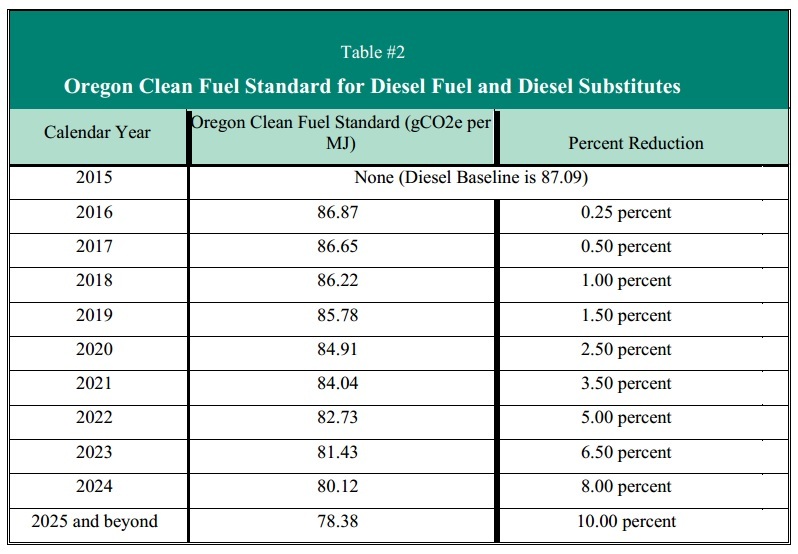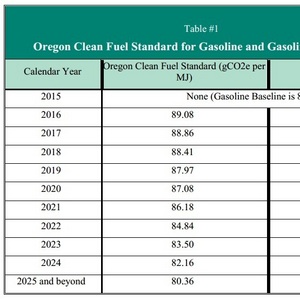Comment period on Oregon Clean Fuels Program closes Nov. 7







Oregon Department of Environmental Quality
November 5, 2014
BY Erin Krueger
A public comment period on the Oregon Clean Fuels Program is set to end Nov. 7. The program, which is similar to California’s Low Carbon Fuels Standard, requires a 10 percent reduction of greenhouse gases (GHGs) from transportation fuels over a 10 year period. A public hearing is scheduled for Nov. 6.
According to information published by the Oregon Department of Environmental Quality, the Oregon Clean Fuels Program was approved by the state’s legislature in 2009. The program is being implemented in several phases. The Oregon Environmental Quality Commission adopted rules for the first phase of the program in December 2011. Those rules allowed the department to collect information on fuels that are currently being imported into the state, enabling the creation of a baseline against which future reductions can be measured.
Advertisement
The DEQ was directed to draft rules for the second phase of the program in February, and an advisory committee met earlier this year to provide input on program design. The comment period on the proposed rule is now open. Information published by the DEQ indicates the program currently has a statutory sunset date of Dec. 31, 2015. If that sunset date is not removed by the state legislature, the DEQ will be unable to implement the program after that time.
The proposed rule calls the lifecycle GHG emissions per unit of energy to be reduced by at least 10 percent below 2010 levels over a 10-year period. The reduction would apply to all transportation fuels used in the state, not to individual fuels. A 0.25 percent reduction would be required in 2016. The required reduction would increase each year, reaching 10 percent in 2025 and beyond.
Advertisement
The baseline for gasoline is set at 89.31 grams of CO2 equivalent per megajoul (gCO2e/MJ). For diesel, the baseline is set at 87.09 gCO2e/MJ. The carbon intensity value for corn ethanol varies under the proposal from as high as 120.99 gCO2e/MJ under the rule to as low at 73.21 gCO2e/MJ. A land use or other indirect effect value of 30 gCO2e/MJ is a part of each corn ethanol pathway. For sugarcane ethanol, the carbon intensity value varies from 73.4 gCO2e/MJ to as low as 58.4 gCO2e/MJ, with each pathway including a 46 gCO2e/MJ value for land use or other indirect effect. The carbon intensity value for compress natural gas varies from 68 gCO2e/MJ for certain fossil-based fuels, to as low as -15.29 gCO2e/MJ for certain biogas-based fuels when used as a gasoline replacement, or 68 gCO2e/MJ to -15.298 gCO2e/MJ when used as diesel replacement. Similarly, the carbon intensity value for liquefied natural gas varies from 93.37 gCO2e/MJ to 15.56 gCO2e/MJ when used to replace gasoline and 83.13 gCO2e/MJ to 15.56 gCO2e/MJ when used to replace diesel. Carbon intensity values for biodiesel span from 83.25 gCO2e/MJ to 4 gCO2e/MJ. For renewable diesel, values span from 93.37 gCO2e/MJ to 19.65 gCO2e/MJ. Carbon intensity values are also given for hydrogen and electricity.
Additional information on the program along with a full copy of the proposed rule is available on the Oregon DEQ website. Information can also be accessed on the Oregon government website. A sample comment on the proposal is available on the Low Carbon Fuels Coalition website.
Upcoming Events





